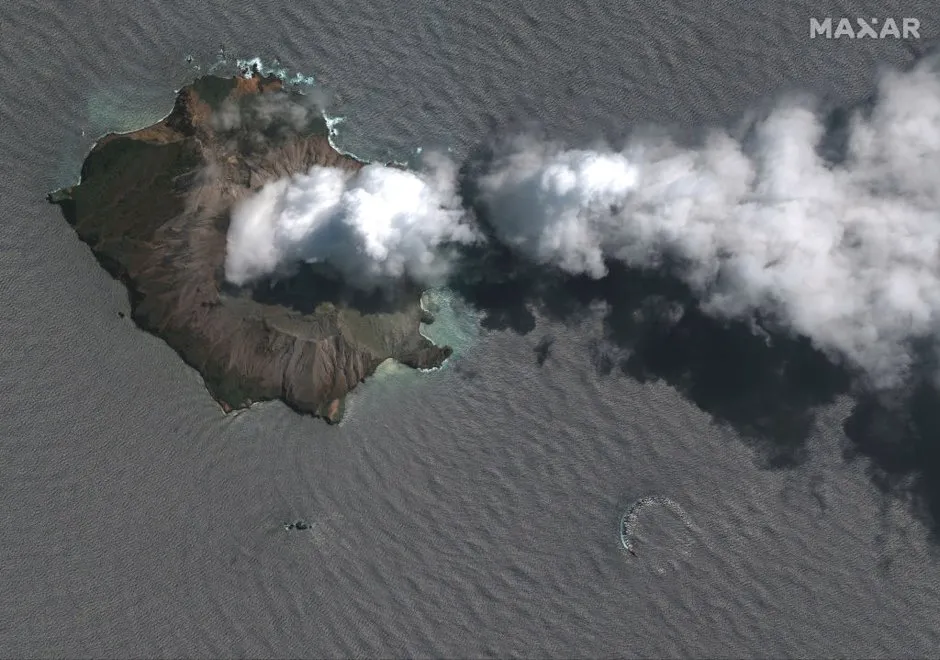In New Zealand’s Bay of Plenty on 9 December 2019, the White Island volcano, known as Whakaari in the native Maori, erupted explosively. Of the 47 people on the island at the time, 18 were killed and many more severely injured. Volcanologist Bill McGuire takes us through what happened.
How much of a surprise was the White Island eruption?
The eruption on White Island was no surprise to volcanologists. Like Stromboli in the Mediterranean, Mount Etna in Sicily, and Kilauea in Hawaii, the White Island volcano is almost continuously showing signs of activity, which is why it is attractive to tourists.
The volcano has an open vent that is typically steaming or sending out jets of gas. Periodically, activity escalates, producing small to medium eruptions of ash, blocks and volcanic bombs. Before the recent blast, the volcano had already erupted five times in the last 20 years.
What exactly happened? Does the volcano have any unusual features?
White Island is actually two overlapping volcanoes poking out of the Bay of Plenty, 50km north of New Zealand's North Island.
A major collapse of the crater wall in 1914 wiped out a sulphur mine on the volcano and killed those working there. The most recent eruption was caused by rising magma coming into contact with ground water resulting in a violent but short-lived (just 12 minutes) hydromagmatic blast [a violent combination of water and magma] that sent a cloud of ash up to 4km into the atmosphere.
At the same time, ground-hugging clouds of steam, hot ash and rock poured rapidly across the terrain.
Read more about volcanoes:
- How to survive inside one of Earth’s deadliest volcanoes
- The thought experiment: What would happen if the supervolcano under Yellowstone erupted?
- How to stop a volcano
- 5 interesting facts about volcanoes to shake up what you know about them
Were there any warning signs?
Yes. There were clear signs that an eruption of some sort might have been on the way. White Island had shown signs of becoming increasingly restless since at least October, with a rise in sulphur dioxide gas emissions and elevated levels of ground tremor.
The alert level was raised from 1 to 2 on November 15th, and by early December, the volcano was producing violent jets of gas and ejecting mud and debris up to 30m into the air.
What makes volcanic eruptions so difficult to predict?
In actual fact, provided they are being monitored, volcanic eruptions are not difficult to predict. To reach the surface, magma must break rock, which generates swarms of small earthquakes detectable by seismometers. To make space for itself, magma also causes the ground to swell, which can be measured using GPS and similar techniques.

Often, the rates of increase of earthquakes and ground swelling can be used to estimate the start of an eruption quite accurately. But predicting the exact timing of small hydromagmatic blasts, like that at White Island, remains notoriously difficult.
Is it safe to visit any volcano as a tourist?
No volcano is completely safe, either for volcanologists working there or for tourists who are just visiting. Most tourists want to see some sign of activity, and this is the problem, because the fact that the volcanoes tourists visit most – such as White Island - are more active, means that the risk of an eruption causing injury or death is higher.
